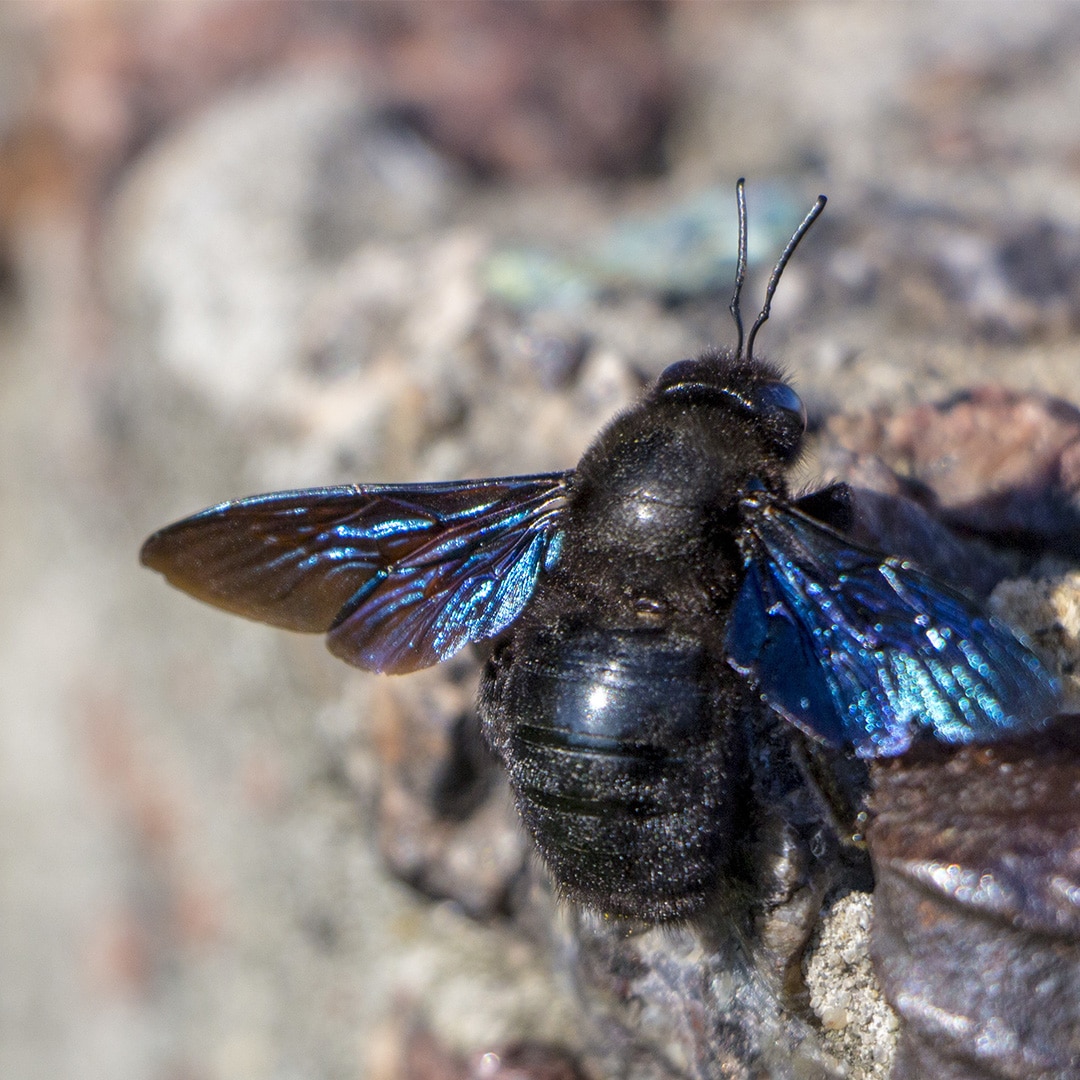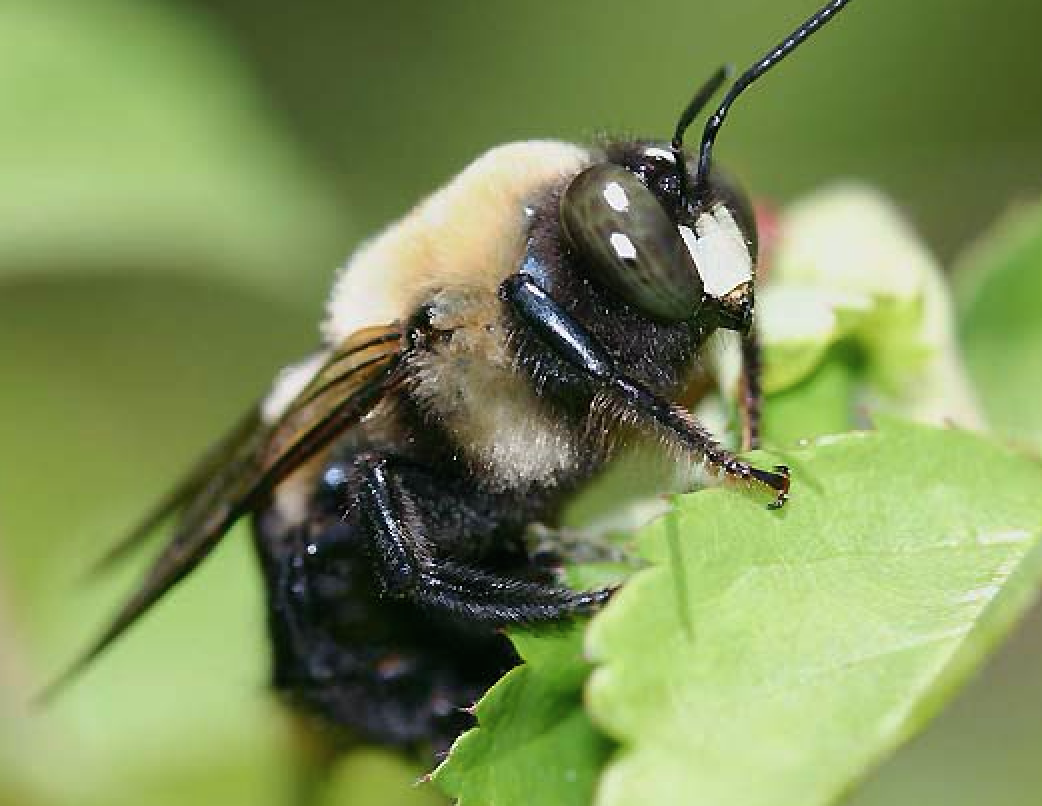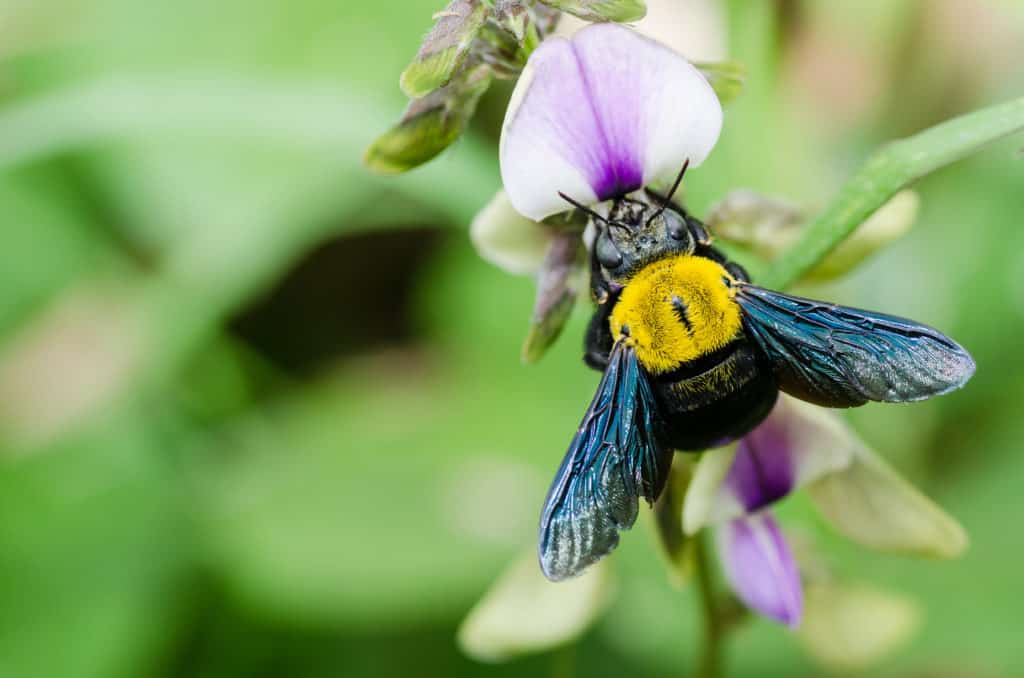
New galleries average 4-6” (10-15 cm), long but reused galleries may extend up to 10 feet. Wooden structures on the property, like decks and fences, are also prone to carpenter bee infestations. They are particularly inclined to build their galleries in soft, unpainted and worn wood, although some species may prefer hardwood. They may reuse an already existing gallery or they may excavate new galleries.įemale carpenter bees chew circular holes through wood to make individual galleries to lay eggs and protect their larvae as they develop. The bees that survive the winter will emerge in the spring to feed on nectar, mate and build galleries. Adult carpenter bees overwinter in abandoned nest tunnels where they have stored limited pollen to survive the colder temperatures. Contact the WVU Extension Service Office of Communications at 30.Unlike bumble bees, carpenter bees are solitary and do not live in nests or colonies. Reasonable accommodations will be made to provide this content in alternate formats upon request. The Higher Education Policy Commission in West Virginia is responsible for developing, establishing, and overseeing the implementation of a public policy agenda for the state’s four-year colleges and universities. The WVU Board of Governors is the governing body of WVU. (Not all prohibited bases apply to all programs). Department of Agriculture (USDA) civil rights regulations and policies, this institution is prohibited from discriminating on the basis of race, color, national origin, sex, age, disability, and reprisal or retaliation for prior civil rights activity. WVU is an EEO/Affirmative Action Employer - Minority/Female/Disability/Veteran. Life of the carpenter bee, Xylocopa virginica (Linn.) (Xylocopidae, Hymenoptera).Īnnals of the Entomological Society of America Vol. Holes during the early morning or late evening when bees are less active.Īuthor: Daniel Frank, former WVU Extension Entomology Specialist When managing for carpenter bees it may be helpful to treat and seal entrance To wait at least 24 hours after treatment with an insecticide to seal entrance If possible,įilling the entire tunnel system with a sealant can also be effective. Should be sealed thoroughly with wood putty or caulking compound. In addition to insecticides,Ĭarpenter bees should be prevented from entering existing tunnels. Spring and early summer when bees are most active. Repeated applicationsĪre generally needed to maintain a lethal dose of the insecticide throughout the

A number of pyrethroid insecticides (e.g., bifenthrin, cyfluthrin,ĭeltamethrin, lambda-cyhalothrin, permethrin, etc.) are available to homeownersĪnd licensed pesticide applicators for control of carpenter bees. Insecticide treatments are most effective whenĭirectly injected into each nest entrance hole, and when applied to the adjacent If this is not possible, or ifīee numbers are too high, an appropriately labeled insecticidal spray or dust can If carpenter bee numbers are not high, control can beĪchieved by simply swatting and killing the bees. If there is already an infestation and control is needed Males often exhibit defensiveīehaviors, such as flying near people that approach their nest, but do not haveĮnsuring that all exposed wood surfaces are well painted or varnished will limitĪttack by carpenter bees. They rarely sting unless threatened or provoked. Nectar from flowers before the weather turns cold. Instead, both males and females collect and feed on pollen and Adults begin to emerge in late summer, but do not construct new tunnelsĭuring this time. Development from egg to adult can take up toģ months. Tunnels are partitioned into several chambers, each containing an egg and food Nests by refurbishing old tunnels or by boring into wood to create new tunnels. In the spring, theyĮmerge from old tunnels to mate and begin egg laying activities.

Repeated nest building by many bees over successive years can result in structuralĬarpenter bees spend the winter as adults within nest tunnels. Of carpenter bees is unlikely to cause anything more than cosmetic damage. Sites in coniferous woods such as pine, cedar or cypress.

Inches in length into dead, un-decayed wood. Females chew round holes up to 1/2 inch in diameter and several Of a bumble bee is fuzzy with numerous hairs, while the carpenter bee abdomen isĬarpenter bees are solitary bees that bore into wood to create nests in which to The common carpenter bee is a large black and yellow insect about 1 inch in length.Ĭarpenter bees closely resemble bumble bees in appearance except that the abdomen Xylocopa virginica, is the most widespread and problematic in West Virginia. Several different species of carpenter bees in the United States, the common carpenter

Lawn, Gardening & Pests Learning ActivitiesĬarpenter bees are a common nuisance pest of wood structures.


 0 kommentar(er)
0 kommentar(er)
